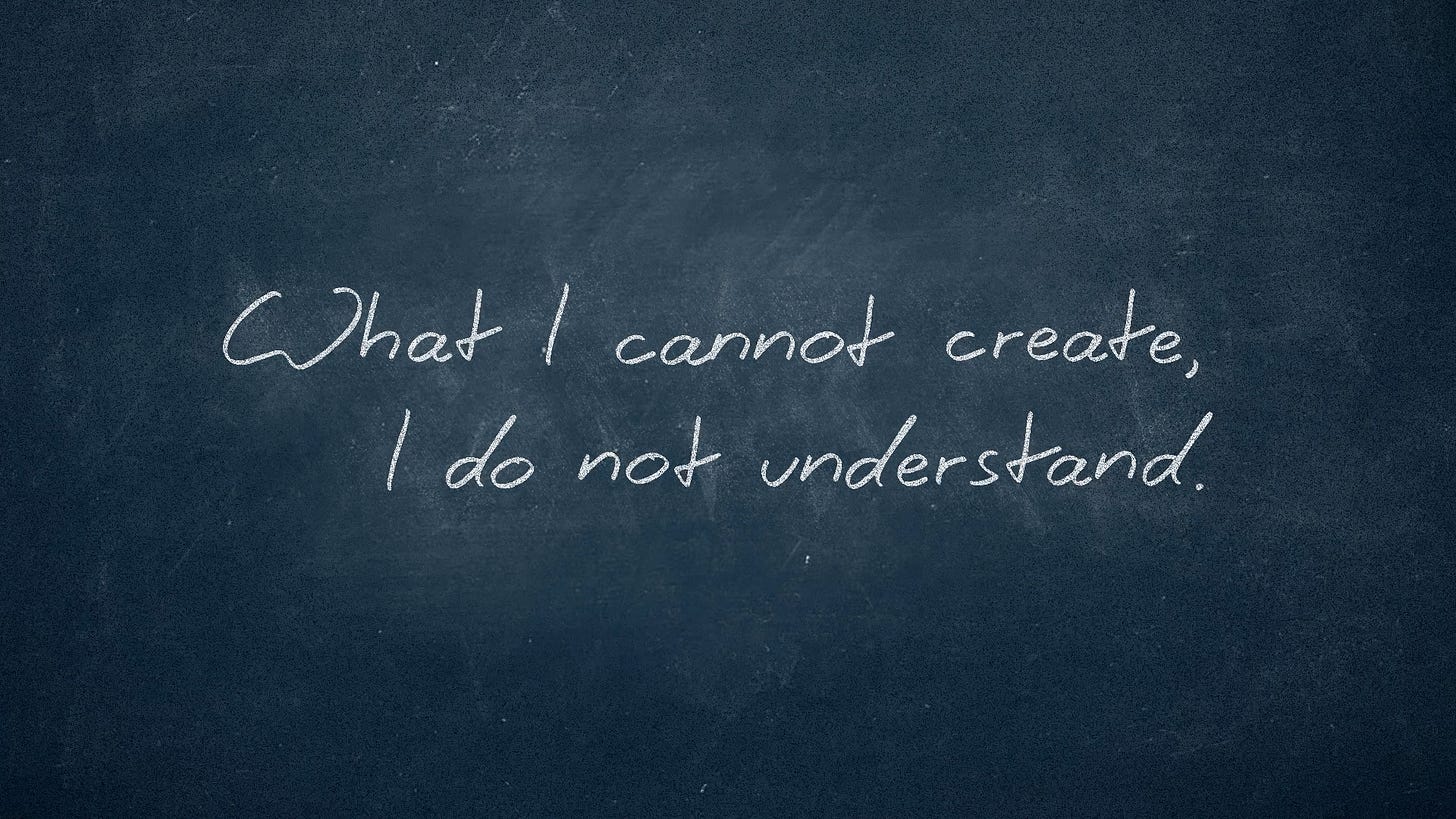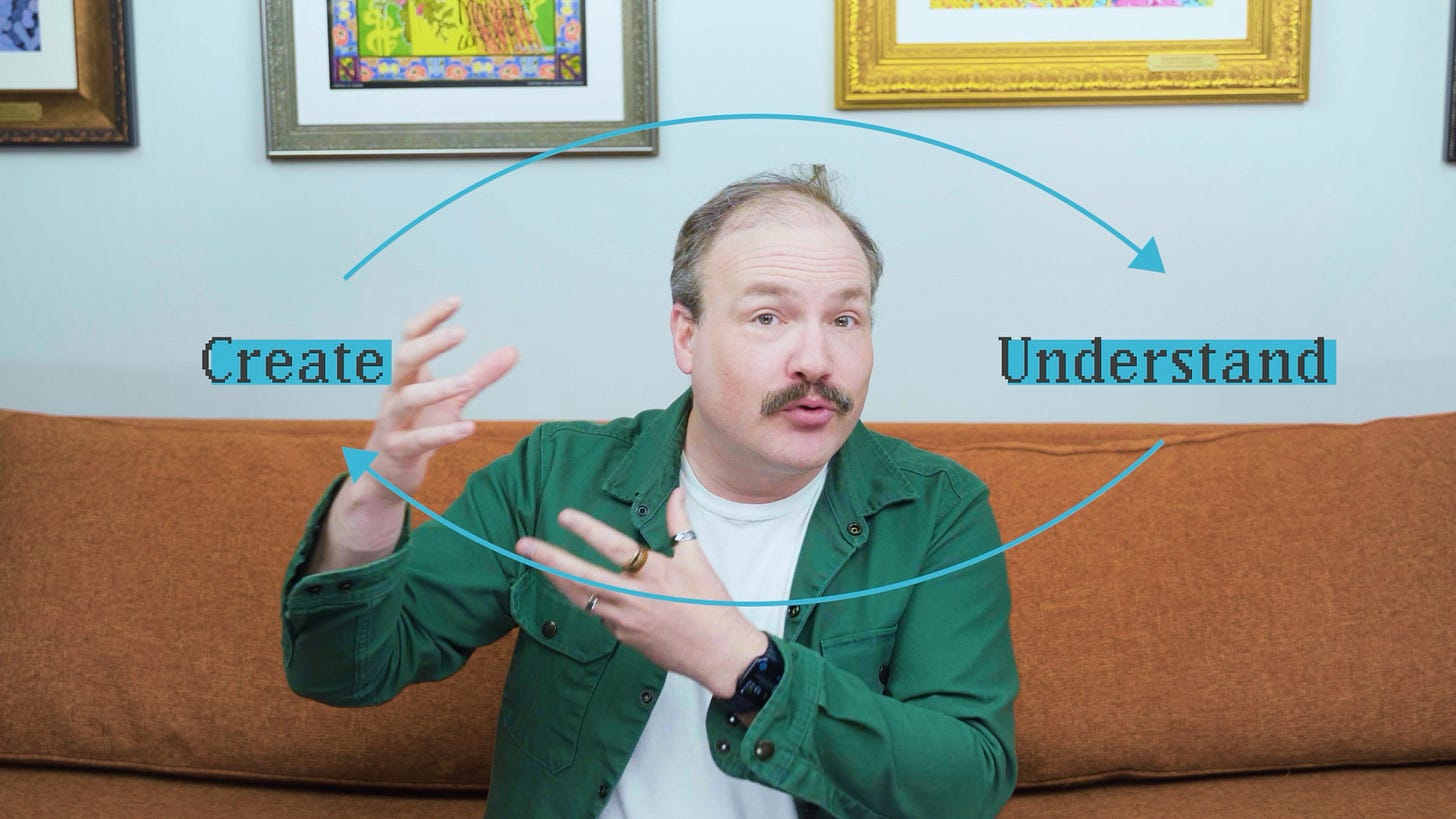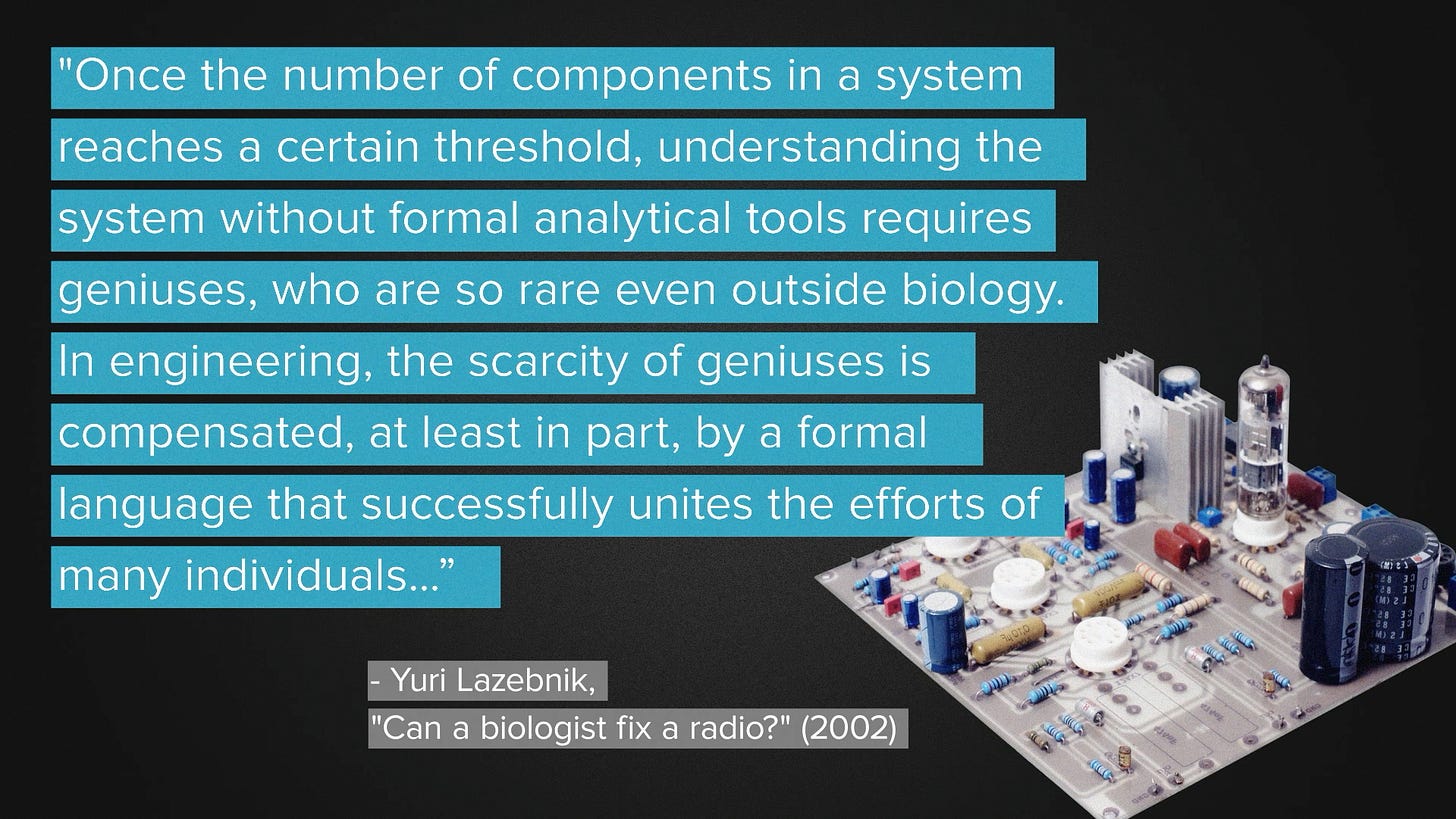Creating and Understanding Biology in the AI Era
What does it take to engineer biology? What do we do when it takes more than a human brain? Today we're talking about synthetic biology in the AI era.
Transcript
If you spend any time in the world of synbio, there's a phrase you're going to hear:
It comes to us from Richard Feynman, who had it on his blackboard at Caltech in a famous photograph from 19881.
Feynman's phrase has been adopted as a kind of motto for the field of synthetic biology and as an argument for approaching biotech R&D like an engineering problem. Creating and understanding work together as two halves of the engineering design cycle. We have to understand biology in order to create new medicines or new sustainable bioproducts. That work of creating things raises new questions and improves our understanding.
I've been thinking about this quote lately in the context of AI, and how AI seems to change the relationship between creating and understanding. I'm sure you've heard this one: AI is just a black box. Data goes in, designs come out, and no human really knows why. If engineering is defined as a feedback loop between creating and understanding, does AI break that loop? Does AI break engineering?
Heavy thoughts, I know. Even for a professional Foundry Theorist like me. But I think the history of synthetic biology has some perspective to offer. Because the question comes down, in part, to what it means to understand biology. And that's a question that synbio has been wrestling with for 25 years.
Let me take you back to 2002 and a classic essay written by Yuri Lazebnik. "Can a biologist fix a radio?"2 It doesn't mention synthetic biology, which barely existed at the time, but it describes what would become the synbio understanding of understanding.
It's a great essay and worth a read, but I'll give it my best summary. He contrasts two approaches to studying a complex system. The way a biologist approaches a cell and the way an engineer approaches a radio.
The biological approach is experimental and descriptive. The engineering approach is formal and quantitative.
Biology starts by breaking open a cell and describing everything about everything, not knowing in advance what will turn out to be important. Engineering focuses on specific functional properties. The resistance of a resistor is what matters, not its shape or color.
Biology performs large experiments with a lot of trial and error, making mutations at random just to see what happens. Engineering fine tunes just a few specific knobs.
Biology creates large interaction maps that include many functional relationships, most of which are only partially understood. Engineering divides systems into fewer components, but with lots of quantitative detail about how those components interact.
Now I'm not here to choose between biology and engineering. I love them both equally. But "Can a biologist fix a radio?" was written at a time when very few biologists were even thinking about engineering. It makes a number of strong points in favor of the engineering approach, but one in particular focuses on the way it supports understanding. This is what sold me on synthetic biology early in my career. It goes like this:
Well my friends, I am not a genius. So that quote perfectly describes what I need to understand biology. I need models that break down a complex system into smaller components that fit in my brain. I need models written in a shared language so that many human brains can work with me on the same problem. In other words, understanding is made possible when our representations are modular and collaborative.
Bringing this back to the question of AI breaking engineering. It will depend, I think, on how good we are at building AI models that are modular and collaborative to support understanding for human brains like mine. In the history of synthetic biology, our models have mostly been written in calculus, using the same mathematical tools that engineers use to understand radios.
But cells aren't radios. And calculus isn't the only modeling language that humans can understand. It won't be easy for us humans. Classical engineering takes years of practice and AI-guided engineering will be the same. But the payoff will be a faster and more robust engineering design cycle.
AI models can be the right tool for understanding biology. And like Feynman might have said "What I can understand, I can create."
Lazebnik Y. Can a biologist fix a radio?--Or, what I learned while studying apoptosis. Cancer Cell. 2002 Sep;2(3):179-82. PMID: 12242150.




